Monday, April 4th, 2011
O’Leno State Park:
The town, founded in 1840 on the banks of the Santa Fe River, was originally called Keno after a popular gambling game at that time. In 1876 Colonel Whetstone applied for a post office for the town of Keno and was denied due to the name and its relationship with gambling. The Colonel then had the name changed to Leno and was granted the post office, which he ran until 1890 when he moved to Mikesville, three miles north of Leno. Leno was an industrious town with two grist mills, a saw mill and six cotton gins. The town also had a general store, hotel, livery stable and doctor’s office. The demise of the town took place in 1894 when the S, F & W Railroad was diverted to pass through Fort White instead of Leno. By 1896 everyone had moved away, leaving Leno a ghost town.
…The site of O’Leno State Park was initially chosen as the location of a Florida Forest Service camp to provide forestry training and education. Development of the camp started as a Works Progress Administration (WPA) project using unemployed labor from the High Springs area. In July 1935, the Civilian Conservation Corps (CCC) installed workers from Company 418, Camp P-67, to assist WPA workers at O’Leno. Development of the site progressed rapidly and between 1935 and 1936 the CCC cleared land, built roads and trails and constructed the dining hall, pavilion, museum/tower building and suspension bridge. In late 1936, the CCC enrollees were withdrawn as the project neared completion and WPA labor became unavailable.
Charming old stoneworks and the suspension bridge are still in use. On our visit, in mid March on the same trip with Alligator Lake Park, there were several groups playing ominous banjo music on the porches and pavilions.
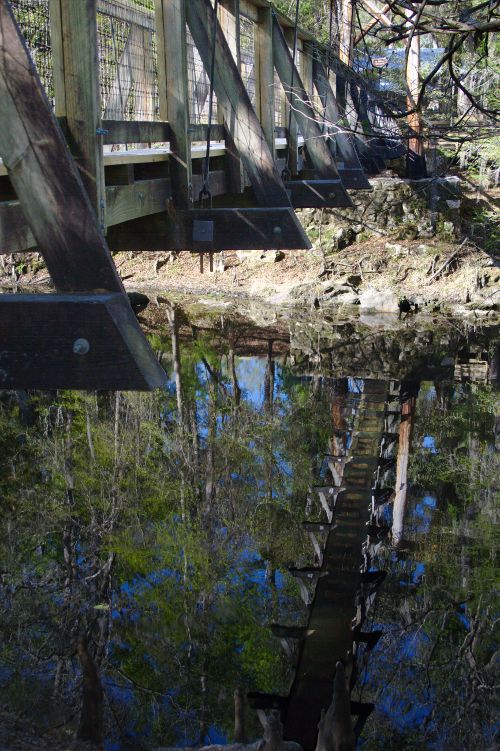
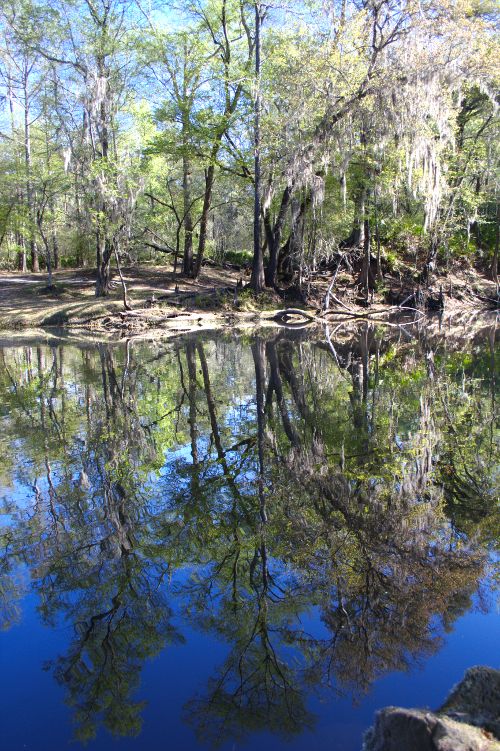
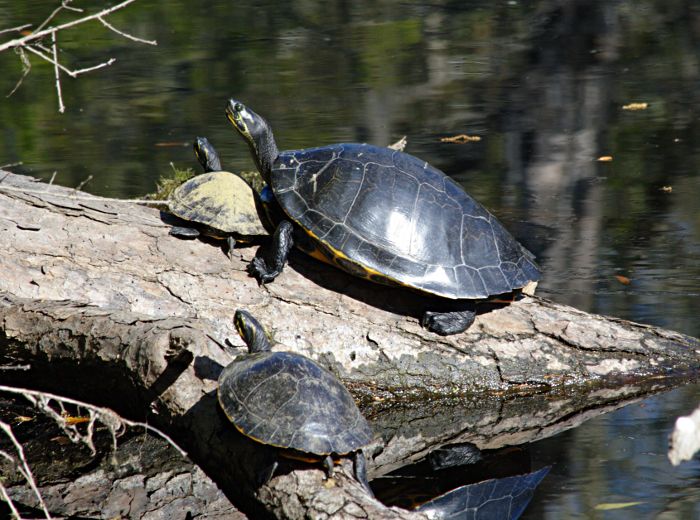
The Santa Fe River disappears underground within the park, surfacing again three miles to the south. Between the sink and rise, several long sinkhole lakes dot the forest. The water in these lakes has a slight current and the water level rises and falls with the river.
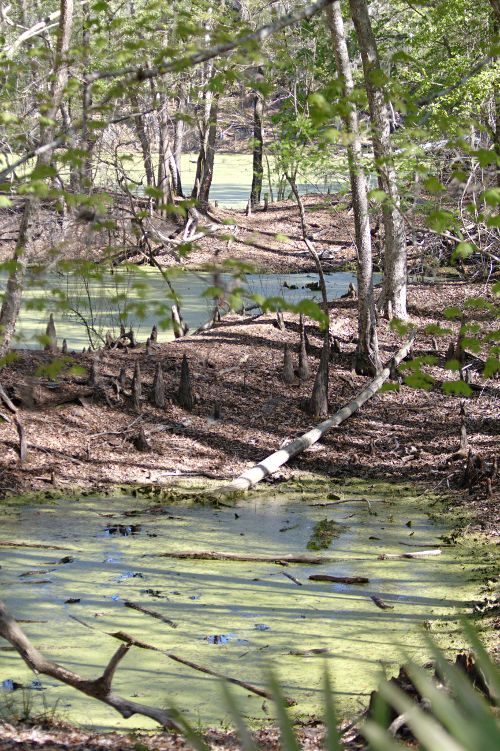
The flowering dogwoods made the forest look like a park.
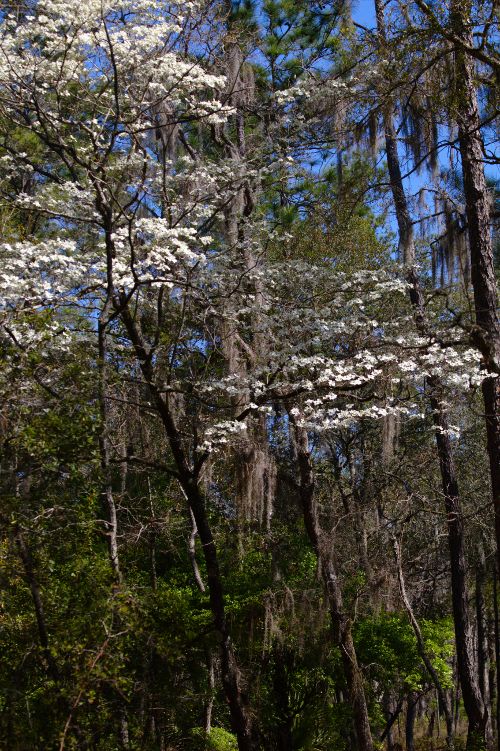
The wild azaleas were also in bloom.
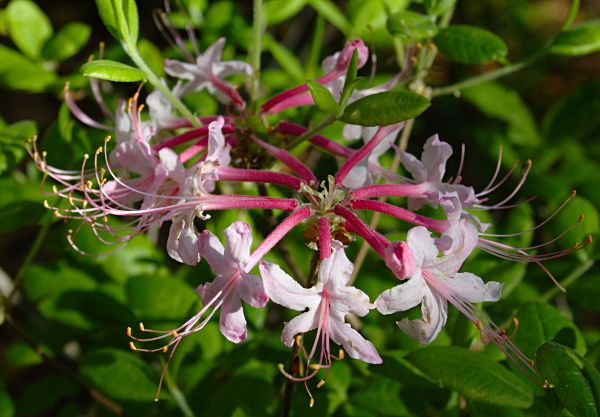
Gemmed satyr
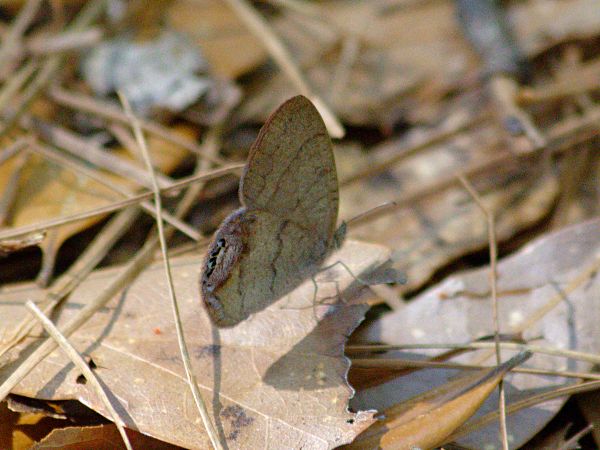
Eastern Towhee
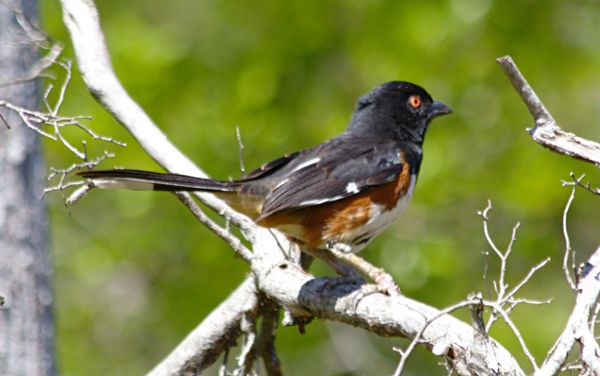
I believe this moth is in the genus Catocala, commonly known as Underwings, but I haven’t found any photos that were an exact match. Wiki on the family Noctuidae:
Some of the family are preyed upon by bats. However, many Noctuidae species have tiny organs in their ears which responds to bat echolocation calls, sending their wing muscles into spasm and causing the moths to dart erratically. This aids the moths in evading the bats.[citation needed]
Several species have larvae (caterpillars) that live in the soil and are agricultural or horticultural pests. These are the “cutworms” that eat the bases of young brassicas and lettuces. They form hard, shiny pupae. Most noctuid larvae feed at night, resting in the soil or in a crevice in its food plant during the day.
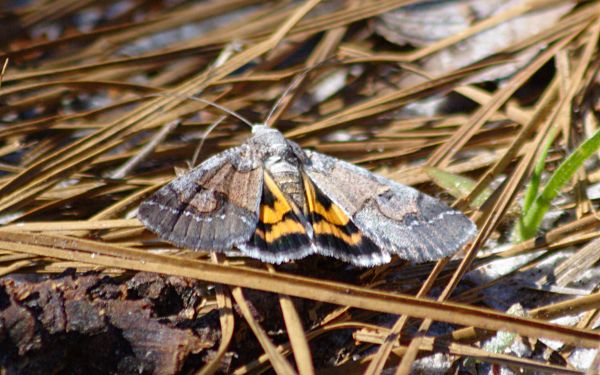
Sunday, April 3rd, 2011
It would be great if we could find a map somewhere of the trails at Alligator Lake Park. We’d only taken the three mile loop trail before. This last trip in mid March, however, we ventured onto some of the side trails off of the south side of the loop, which in turn have side trails of their own, becoming somewhat maze-like. It was our sense of direction, not the signs, that got us back to the car.
It was an earlier spring than last year. Rain lilies.
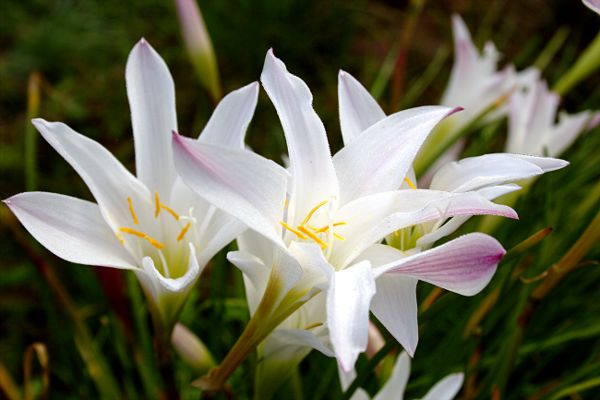
The butterfly book says that these American Ladies are familiar across most of North America, but this was our first sighting of one.

This is the same butterfly, with wings closed.
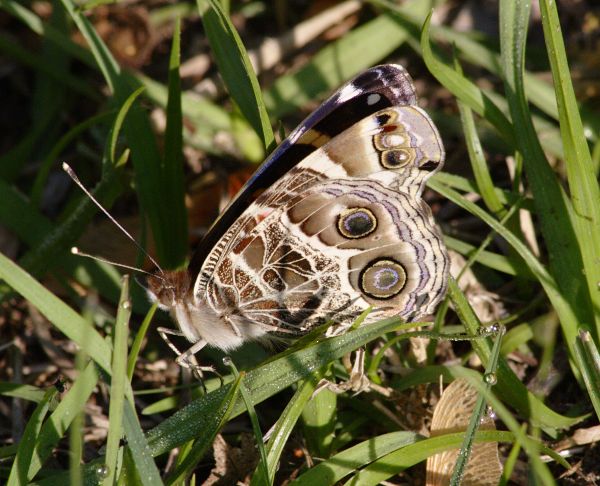
Viola’s form of the Little Wood Satyr
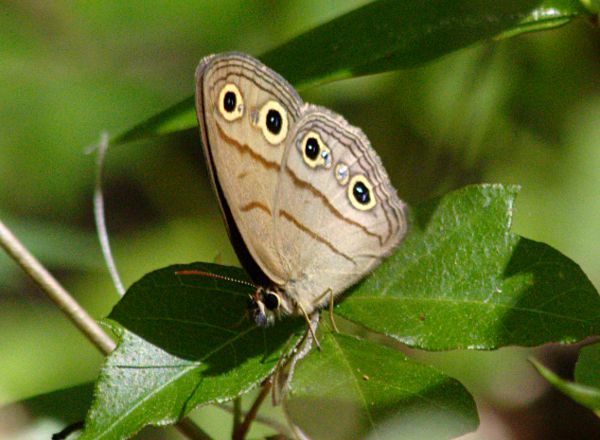
Mike said he knew there were bison here, but I wasn’t expecting to find these roaming around. I’d think during some times of year there wouldn’t be much dry land to graze on.

Some parts are deeper than others, and the water level changes drastically across the seasons. Much of the lake used to be drained and used as farmland. From the link above, “Several sinkholes are located in the north and south basins of the lake which provide direct connection to the aquifer. One of these sinkholes has been responsible for frequently draining the northern lake basin.”
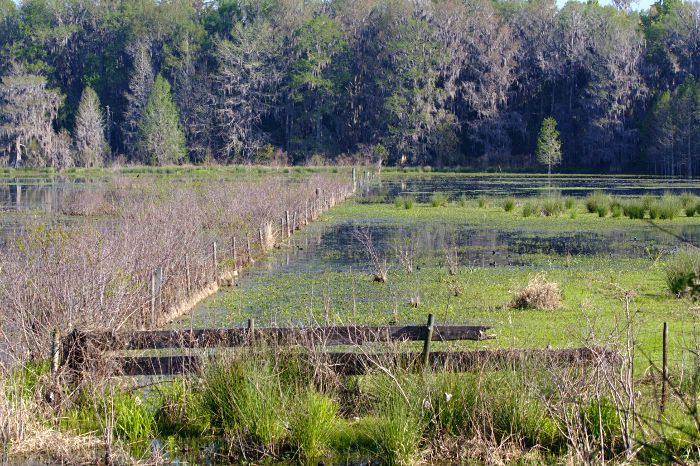
There were, as usual, constant and varied bird song, and coots and more coots.
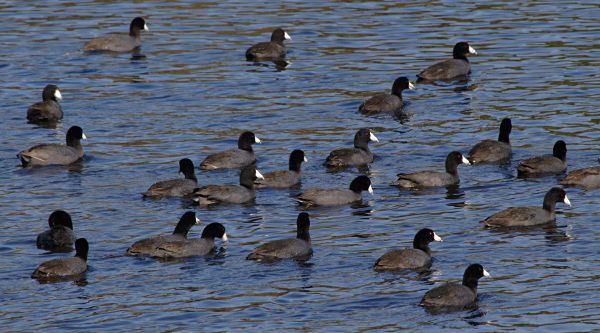
I have lots of shots of poorly lit or out of focus flitty birds, some of which we may be able to identify, but we never caught sight of the owners of most of the calls. Animals are more skittish here than in other parks we visit. The turtles almost all kerplunk back into the water before we see them. I had already walked by this rotting stump when Mike motioned me back to look at this snake. Possibly a brown water snake. I’m not sure what’s up with its clouded eye. (His picture)
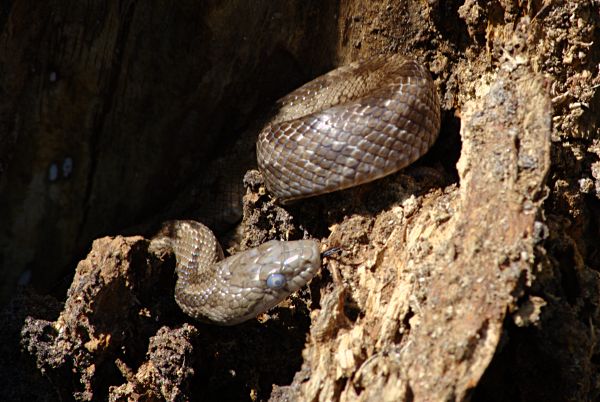
Wednesday, March 9th, 2011
Alligator Lake Park is the place to see birds, and Little Manatee River State Park is the place to see insects. On our first visit, the mosquitoes drove us back at the half way point cross-over trail. This time, in early February, the mosquitoes and dragon/damsel flies hadn’t emerged yet. It started raining at about the same half way point, but it was warm and we kept going, after I put the camera away. Before then, this red admiral stopped in front of us.
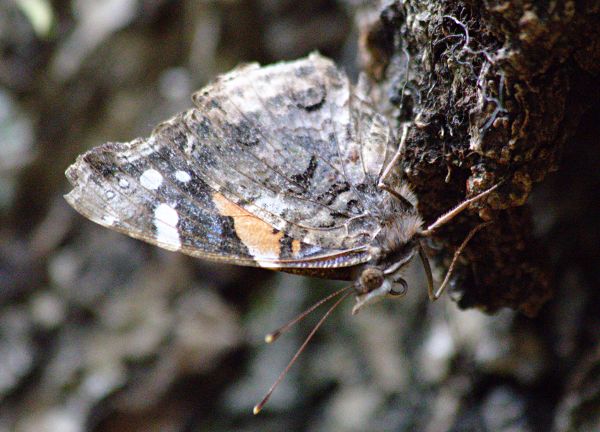
These aren’t in my Audubon guide, but Mike found this is a reticulated netwinged beetle. When this one landed, a jumping spider came to investigate, and then decided it had not found lunch.
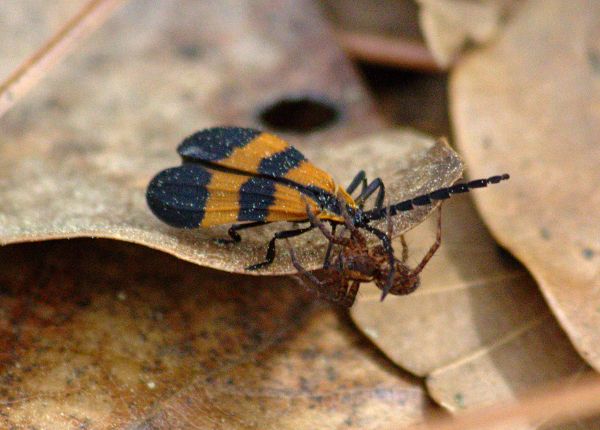
I have no idea how to identify individual snakes, but this is a yellow rat snake, roughly near the same section of trail where we saw the same species last year.
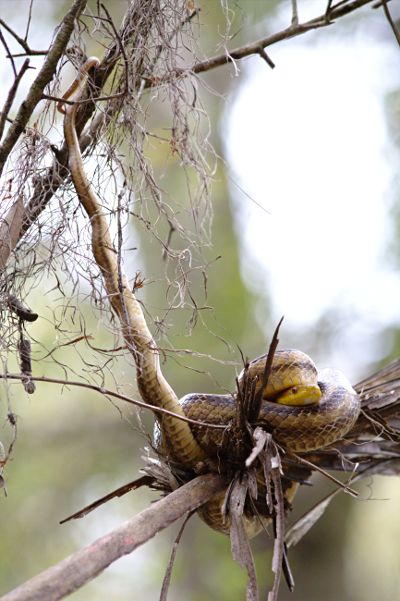
Ripe prickly pear fruit. They taste good, but are obviously wild, not super sweet and with large seeds. The skin has small prickles that must be rubbed off even if the large spikes have already been broken off.
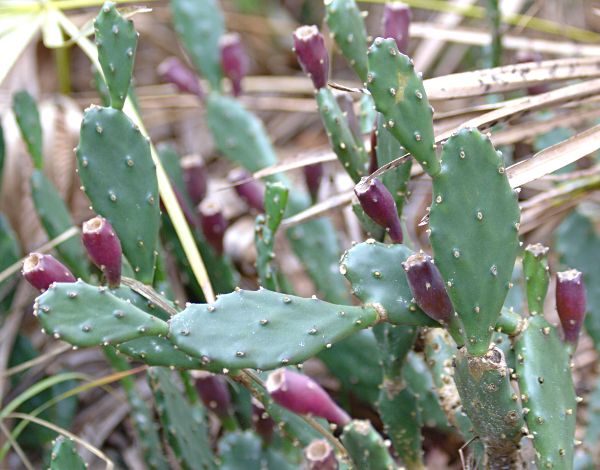
Cladonia lichen, I think. Perhaps the British Soldiers variety.
British Soldiers, like all lichens, grows very slowly. It grows one to two millimeters each year.
British Soldiers can start making spores when they are about four years old. Pieces of lichens that get broken off can also start making a new lichen, if they are in the right environment.
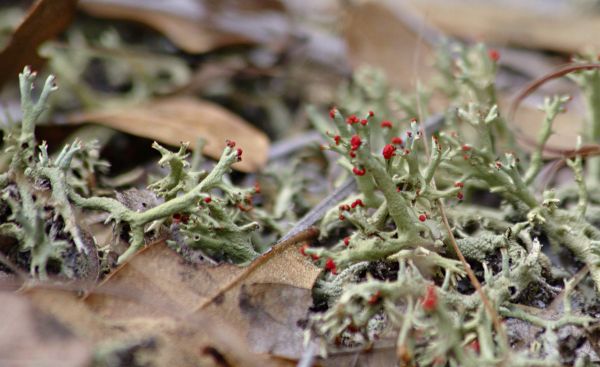
Stinkhorn mushroom. From wiki, “The spore mass typically smells of carrion or dung, and attracts flies and other insects to help disperse the spores.”
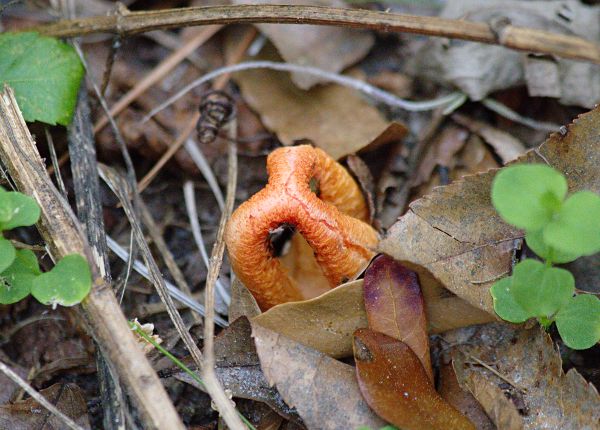
Wednesday, February 23rd, 2011
Oscar Scherer State Park is a surprisingly large park, over two square miles, for being right in the middle of the urban sprawl. Trails criss cross the park, with arrows on stakes pointing you to the official paths. Usually. South Creek, barely more than a drainage ditch in the northern sections, meanders through the park, and the Legacy Trail (Sarasota to Venice Rail-Trail) cuts north to south.
The park protects the Florida Scrub Jay, the only bird endemic to Florida. While bold and curious like their Blue Jay relatives, they only live in Florida scrub, hot, sandy areas consisting mainly of dwarf oak and frequented by wildfire. Habitat reduction has reduced their numbers to less than 8,000 mature birds. The park conducts a monthly census of its population of Florida Scrub Jays; every bird we saw had leg bands.
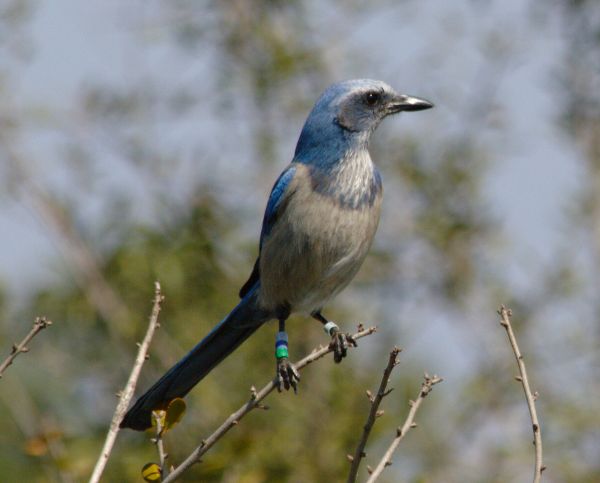
We saw several sulphurs and zebra swallowtails, one red admiral and this common buckeye:
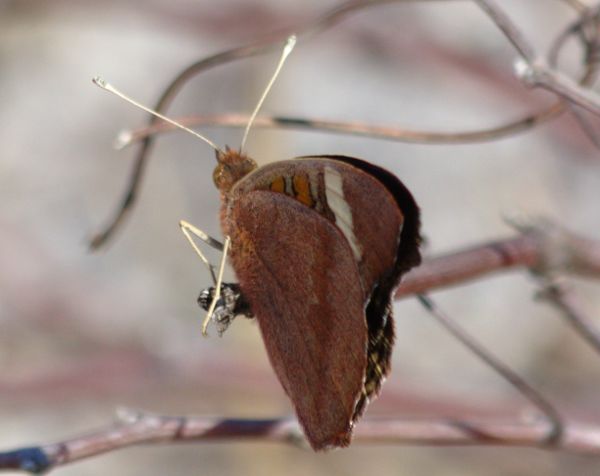
I haven’t been able to identify this one, so I’m calling it a feathered moth.
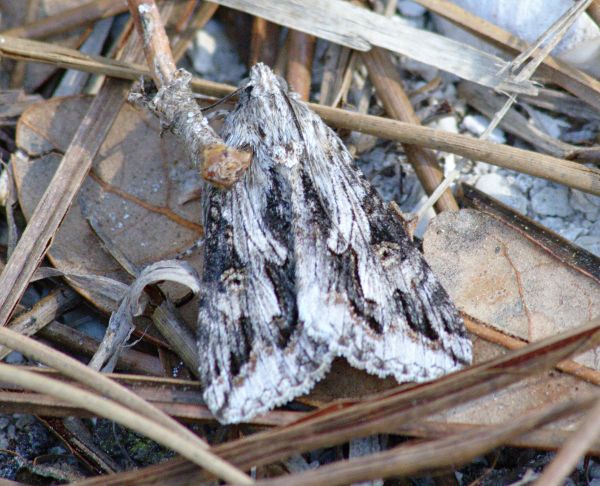
Nor do we know what kind of fish these were, but there were several huge schools in South Creek.
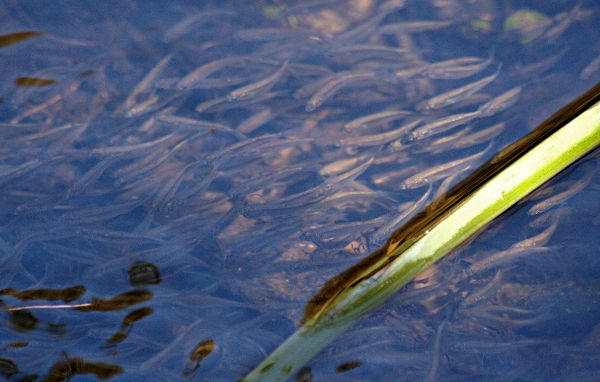
I don’t think I’ve seen Northern Flickers since the group that lived near our townhome in Seattle.
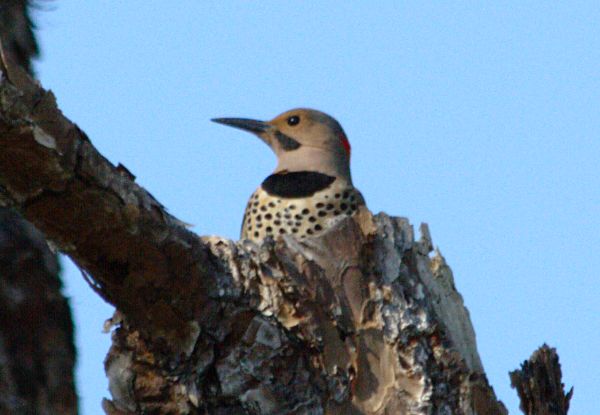
Friday, February 4th, 2011
I’m terribly behind on posting pictures. One picture of a poinsettia hardly covers the San Diego trip. But here instead is one of our first outings with the new T2i camera, to Paynes Prairie just south of Gainesville, in the last days of December.
This is not a grassland prairie. Almost everywhere has brush much taller than me. I believe this is a yellow-rumped warbler.
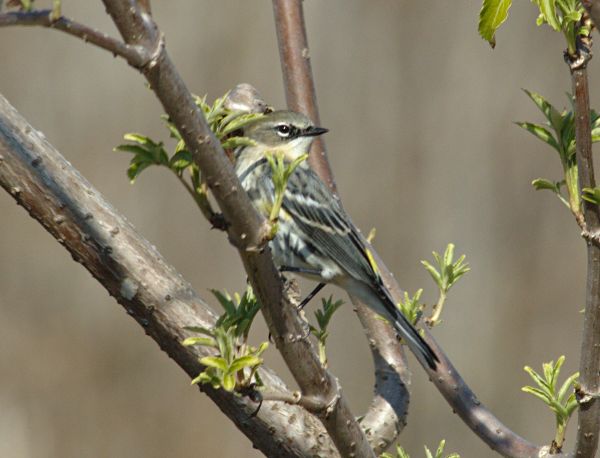
It was a delightfully warm day after a stretch of cold, and this may have been the first day the armadillos were able to rout about in a while. In any case, they were plentiful, and completely indifferent to our presence. Usually they have their head down sniffing about under the leaf litter, so they must not use their eyes much.
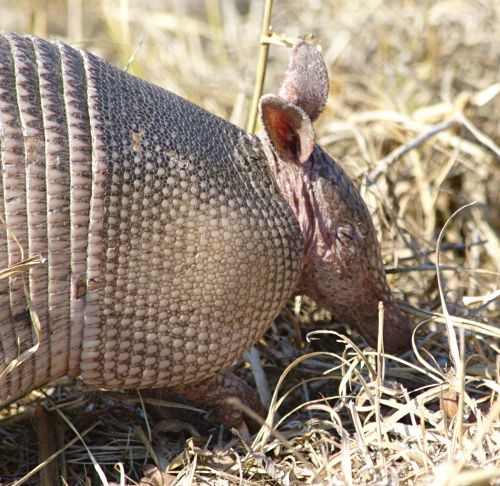
The new camera is very inviting and has a gorgeous screen on the back. Several killdeer were patrolling the trail, would fly a little ahead, we’d catch up, they’d fly a little farther, and finally, perturbed, fly over our head to land back on the trail behind us.
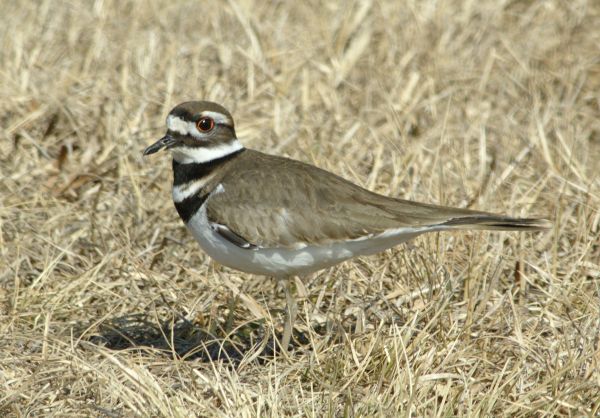
A green (?) anole.
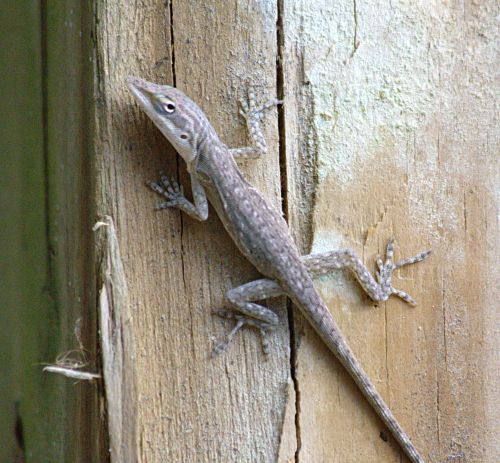
Just a few feet rise in elevation from the prairie there are stands of sweet gum. A red-bellied woodpecker.
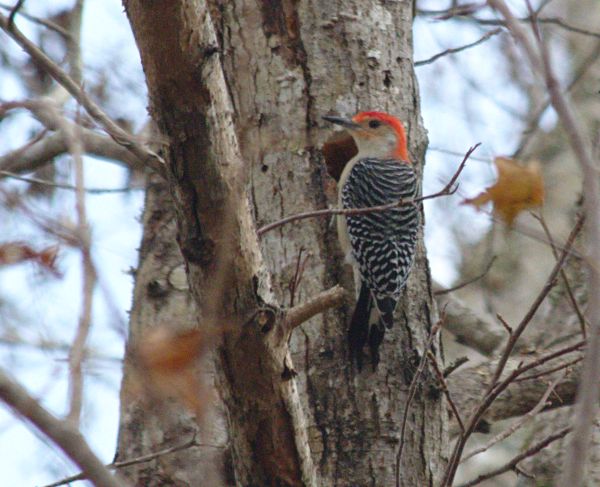
And then a few feet above that the oak and palmetto start back up. It was in here that we saw the wild horses that live in the park, albeit ones very accustomed to people walking by. They seem to be fending just fine, eating palmetto and acorns while we watched.
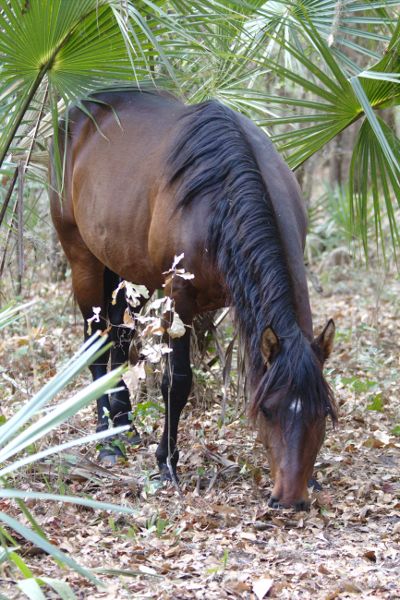
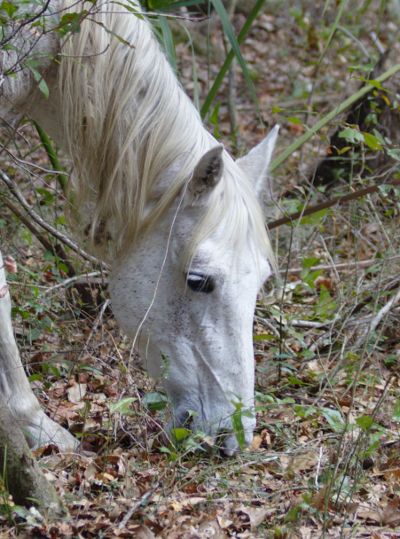
Monday, January 31st, 2011
This is the best, as in well written and informative, early review I’ve seen about the new Adam tablet from Notion Ink. The company proposed a great cross-set of features that fit my wishes pretty closely, long battery life, e-reader, wifi, open, not attached to a cell contract, a good selection of ports. Others must have agreed; the company has developed a devout following of fanboys. I’ve only been held in suspense for about two months, watching the bumps and tumbles of delays and removed features. These user reviews are the first real opinions I’ve seen on the device in the wild. And it’s about what one would expect from a start-up, still getting the bugs worked out. Which is to say it’s rather disappointing to have that potential of perfection, or at least robustness, dashed. It’s tough coming out with an Android tablet before Honeycomb. That doesn’t mean that the device is a failure, it still might meet my needs if I went back to the base Android OS, but I’m not likely to buy their first generation device.


